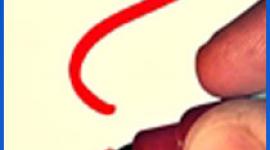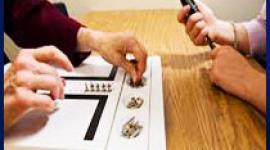Effects of Stimulus Intensity and Electrode Placement
Effects of stimulus intensity and electrode placement on the efficacy and cognitive effects of electroconvulsive therapy
 Abstract: BACKGROUND. The efficacy of electroconvulsive therapy in major depression is established, but the importance of the electrical dosage and electrode placement in relation to efficacy and side effects is uncertain. METHODS. In a double-blind study, we randomly assigned 96 depressed patients to receive right unilateral or bilateral electroconvulsive therapy at either a low electrical dose (just above the seizure threshold) or a high dose (2.5 times the threshold). Symptoms of depression and cognitive functioning were assessed before, during, immediately after, and two months after therapy. Patients who responded to treatment were followed for one year to assess the rate of relapse. RESULTS. The response rate for low-dose unilateral electroconvulsive therapy was 17 percent, as compared with 43 percent for high-dose unilateral therapy (P=0.054), 65 percent for low-dose bilateral therapy (P=0.001), and 63 percent for high-dose bilateral therapy (P=0.001).
Abstract: BACKGROUND. The efficacy of electroconvulsive therapy in major depression is established, but the importance of the electrical dosage and electrode placement in relation to efficacy and side effects is uncertain. METHODS. In a double-blind study, we randomly assigned 96 depressed patients to receive right unilateral or bilateral electroconvulsive therapy at either a low electrical dose (just above the seizure threshold) or a high dose (2.5 times the threshold). Symptoms of depression and cognitive functioning were assessed before, during, immediately after, and two months after therapy. Patients who responded to treatment were followed for one year to assess the rate of relapse. RESULTS. The response rate for low-dose unilateral electroconvulsive therapy was 17 percent, as compared with 43 percent for high-dose unilateral therapy (P=0.054), 65 percent for low-dose bilateral therapy (P=0.001), and 63 percent for high-dose bilateral therapy (P=0.001).
Regardless of electrode placement, high dosage resulted in more rapid improvement (P < 0.05). Compared with the low-dose unilateral group, the high-dose unilateral group took 83 percent longer (P < 0.001) to recover orientation after seizure induction, whereas the combined bilateral groups took 252 percent longer (P < 0.001). During the week after treatment, there was three times more retrograde amnesia about personal information with bilateral therapy (P < 0.001). There were no differences between treatment groups in cognitive effects two months after treatment. Forty-one of the 70 patients who responded to therapy (59 percent) relapsed, and there were no differences between treatment groups. CONCLUSIONS. Increasing the electrical dosage increases the efficacy of right unilateral electroconvulsive therapy, although not to the level of bilateral therapy. High electrical dosage is associated with a more rapid response, and unilateral treatment is associated with less severe cognitive side effects after treatment.
Author:
Sackeim HA
Prudic J
Devanand DP
Kiersky JE
Fitzsimons L
Moody BJ
McElhiney MC
Coleman EA
Settembrino JM
Address: Department of Biological Psychiatry, New York State Psychiatric Institute, NY 10032
Abbreviated Journal Title: N Engl J Med
Date Of Publication: 1993 Mar 25
Journal Volume: 328
Page Numbers: 839 through 846
next: Electroconvulsive Therapy Background Paper
~ all Shocked! ECT articles
~ depression library articles
~ all articles on depression
APA Reference
Staff, H.
(2007, February 20). Effects of Stimulus Intensity and Electrode Placement, HealthyPlace. Retrieved
on 2026, January 4 from https://www.healthyplace.com/depression/articles/effects-of-stimulus-intensity-and-electrode-placement



